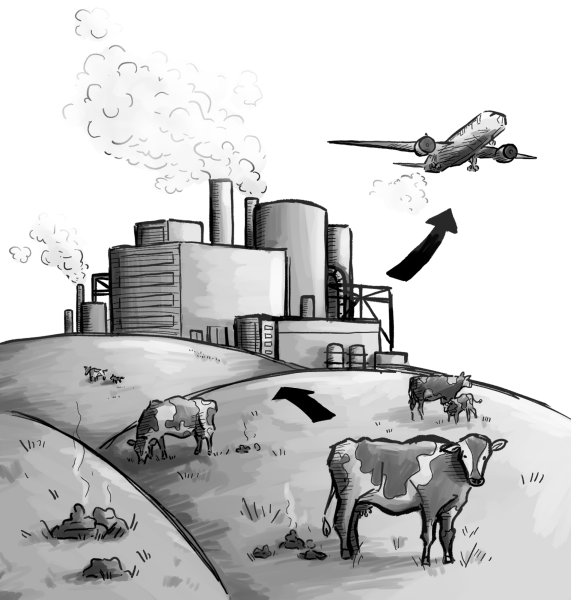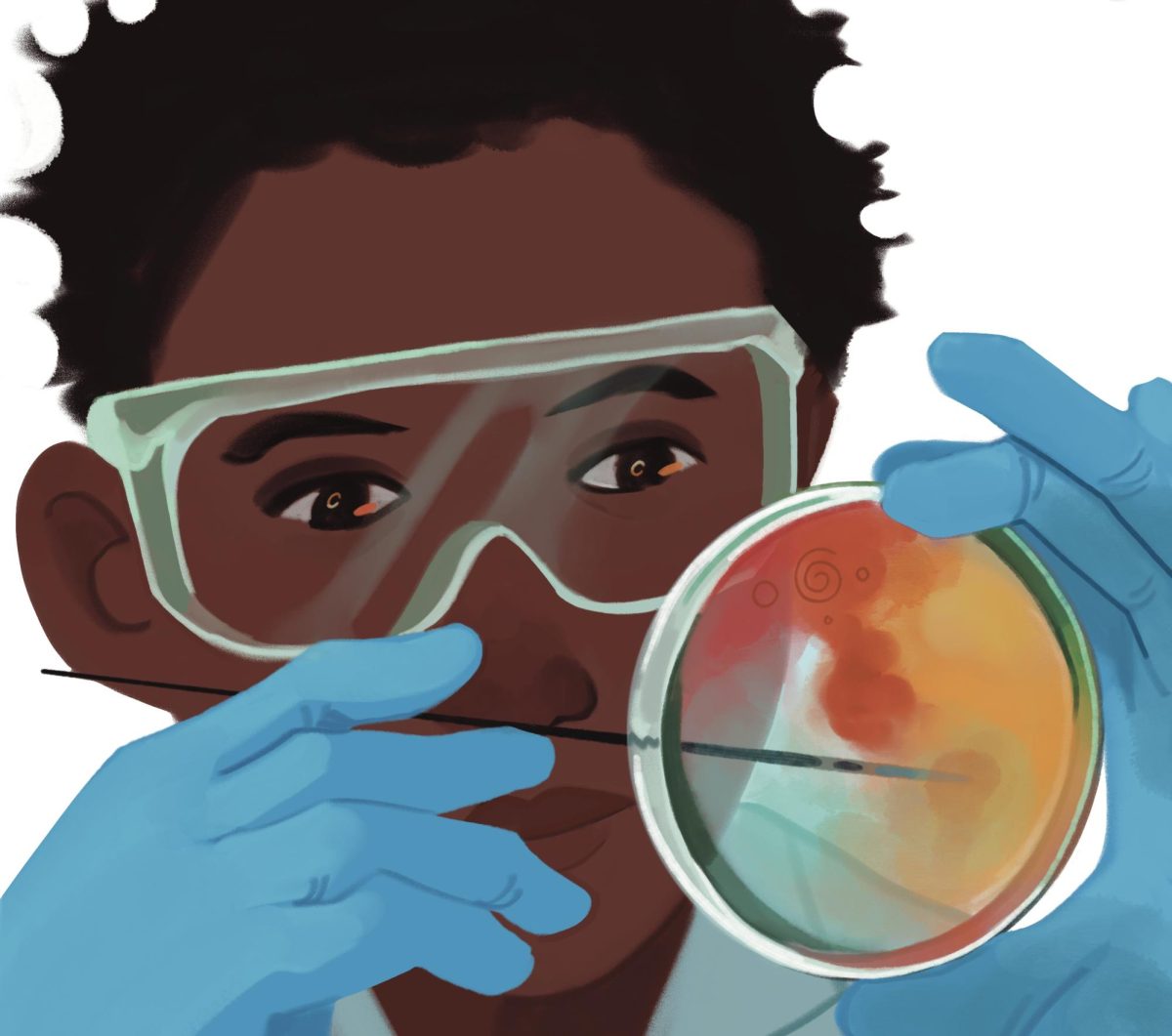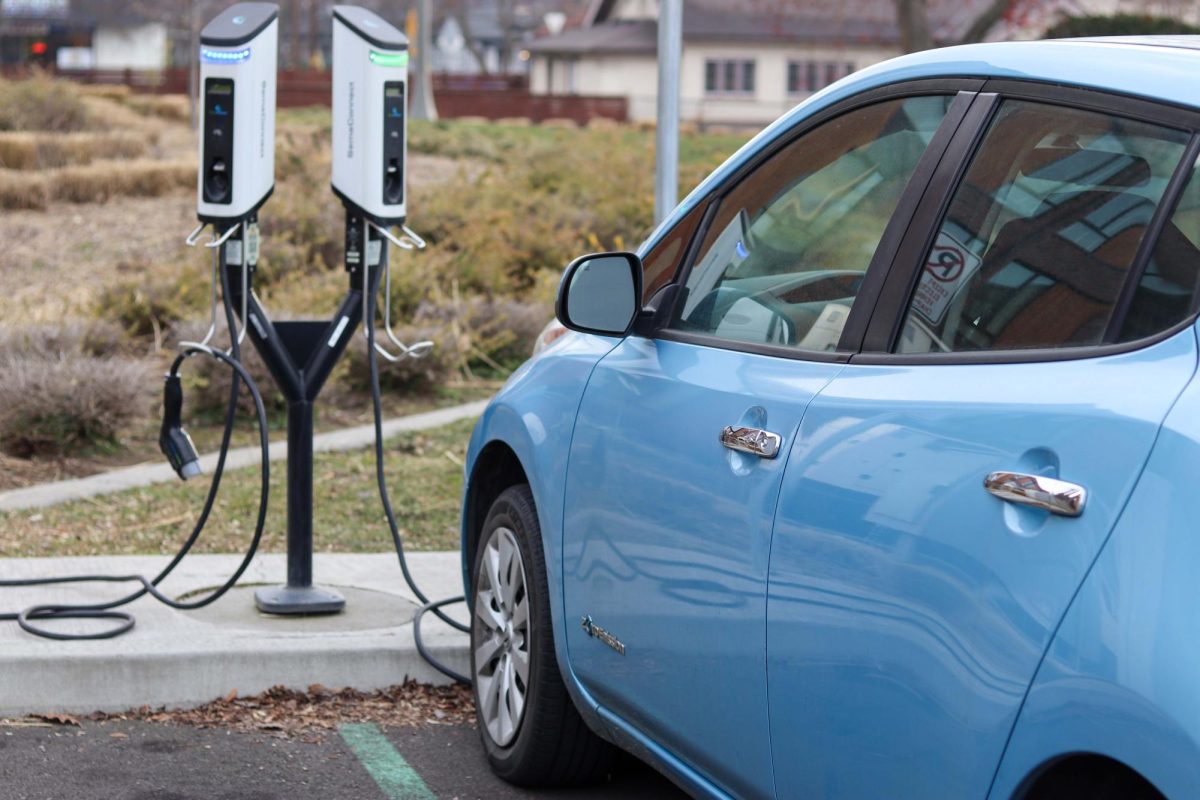
Renewable natural gas – also known as biogenic methane – sounds like an oxymoron. Produced using manure, trash and wastewater sludge, its origins may not be much more glamorous than hydraulic fracking, but it comes at a fraction of the environmental cost.
Dr. Joshua Heyne, director of the Bioproducts, Sciences and Engineering Lab at WSU Tri-Cities, explained that the release of methane – which is 28 times more potent than carbon dioxide at trapping heat in the atmosphere – is an inevitable output of feedlots and landfills.
“We don’t want that natural gas to go into the environment… It’s a greenhouse gas and we can use it for something. So we want to use it for something useful,” Heyne said.
Like traditional natural gas, renewable natural gas (RNG) can be used for heating and electricity generation; but today, it’s mostly being used as transportation fuel in heavy-duty vehicles. Soon, RNG could be the dominant feedstock (raw material input) in sustainable aviation fuel (SAF) as the aviation industry aims to reach net-zero emissions by 2050.
In Nov. 2024, the Walla Walla County Port Commission approved the sale of 165 acres of the Wallula Gap Business Park to SkyNRG for $10.7 million. SkyNRG has been at the forefront of SAF technology since 2010, and their “Project Wigeon” will be one of the first facilities to convert RNG into SAF at a commercial scale. The facility is set to open in 2029.
The Port received a $1.5 million grant from the Washington State Department of Commerce to pass on to SkyNRG through reimbursements to cover feasibility, design and permitting costs.
While the Project Wigeon facility will include an onsite anaerobic digester that will convert locally sourced feedstock into RNG, the majority of the RNG will be brought in from outside sources via pipeline. From there, the RNG will be converted into SAF and renewable diesel.
When asked to describe the process of converting RNG to SAF in layperson terms, Heyne compared it to a Lego block.
“So you have a methane with one carbon, [that’s] a one-node Lego block and you have to make one that has 12 nodes on it…. There’s more nuance to it, obviously, but that’s basically what you’re doing, is linking these carbon molecules together into something that can be safely used in aircraft engines and infrastructure,” Heyne said.
Heyne emphasized that SkyNRG is at the cutting edge of SAF technology. There are currently only two facilities in the United States capable of producing SAF: World Energy’s plant in Paramount, California, and Montana Renewables’ plant in Great Falls, Montana. Both plants rely on agricultural oils and fats (such as canola oil) as their primary feedstock, rather than RNG. Some researchers argue these kinds of crop-based biofuels are even less sustainable than petroleum products due to the land use and water resources required for production. Thus, RNG, which doesn’t require the displacement of land, could have a promising future as a feedstock with fewer life-cycle greenhouse gas emissions.
No matter the feedstock, SAF still emits carbon dioxide when it’s burned in an aircraft; however, Heyne explained that SAF releases fewer pollutants than traditional jet fuel.
“The best molecules that are in the conventional fuel are the only molecules in the SAF,” Heyne said.
While personal vehicles are slowly transitioning from gasoline to battery-powered, electrifying aviation poses a much steeper challenge. The weight and size of lithium-ion batteries proportionate to their energy density make fully electric passenger planes unfeasible for widespread commercial use, at least for now.
Heyne explained the unique properties of jet fuel that make it especially difficult to replace: it’s much less flammable than other petroleum products, and its freezing point is -40 degrees Celsius.
“Jet fuel does so many things that we take for granted. I don’t want to say it’s a perfectly optimized fuel for aviation, but it’s darn near it,” Heyne said.
In a Port Commission meeting on Dec. 31, 2024, Commissioner Amy Schwab, whose professional background lies in renewable energy, expressed her excitement regarding the project’s environmental potential.
“Aviation is one of the toughest sectors to decarbonize and using sustainable sources for aviation fuel – we’re talking about a carbon footprint of at least 60 percent below the petroleum alternative, so this is really an important aspect in making strides toward decarbonization for the critical aviation sector, so I think this is great,” Schwab said.
In addition to environmental benefits, Port Commissioner Kip Kelly emphasized the economic impact the project will have on the county.
“The term win-win is thrown out a lot. In my way of thinking, the SkyNRG Project is a win-win-win-win: … tax base expansion, job creation, an environmentally beneficial product and reduction of environmentally unsavory feedstock,” Kelly said in an interview with The Wire.
Kelly said the SkyNRG facility is expected to increase Walla Walla County’s tax base by $1 billion. According to a press release from Governor Ferguson’s office, SkyNRG anticipates the creation of 600 construction jobs and 100 permanent jobs once the facility is complete.
“This project is backed by aviation leaders, investors, and Washington state’s forward-thinking policies to expand domestic fuel supplies, create high-paying jobs in Eastern Washington, and drive economic growth,” said a SkyNRG spokesperson in an email to The Wire.
Because RNG can be used interchangeably with traditional natural gas, it can be transported using existing pipeline infrastructure accessible from Wallula Gap. This backward compatibility reduces the amount of new infrastructure required to integrate renewable fuels and allows for a smoother transition between old and new fuel sources. However, the flip side of backward compatibility is an entrenched reliance on pipeline infrastructure, which is known to leak methane and has received extensive pushback from Indigenous communities.
Air pollution is another potential concern. A 2024 report compiled by the Environmental Integrity Project found that 226 biofuel plants in the U.S. reported emitting a combined 12.9 million pounds of hazardous air pollutants, including carcinogens such as formaldehyde and acetaldehyde. While none of these facilities produce SAF specifically, several of the facilities mentioned in the report produce renewable diesel, another fuel made from biomass that SkyNRG plans to produce in addition to SAF. However, the technology being used by SkyNRG is new enough that direct comparisons may not be appropriate.
A SkyNRG spokesperson responded to this concern in an email to The Wire.
“Project Wigeon will fully comply with all state and federal air quality regulations, with no exemptions. In our permit submitted to the state, we project that air emissions from the facility will be low enough to qualify as a ‘minor emitter’ under Washington’s environmental regulations,” SkyNRG said.
Heyne explained why SkyNRG is disincentivized from releasing harmful emissions.
“[SkyNRG] is looking at creating a low carbon intensity fuel… [T]he emissions outlined in that [Environmental Integrity Project] report would add to their total carbon intensities. Oxygenated molecules like formaldehyde listed in the report are a greenhouse gas emission, and also represent efficiency losses from their conversion technology,” Heyne said in an email to The Wire.
Kelly said the Port Commission did not discuss air pollution with SkyNRG.
Given the Washington legislature’s decision to expedite permitting and environmental review for the construction of clean energy plants, the quantity and type of air pollution that will be emitted is worth monitoring as the project develops further.
SkyNRG currently awaits the final word from the Washington Department of Ecology, which is reviewing its SEPA environmental checklist. Proximity to the Columbia River, intense build-up of infrastructure in the area and emissions from the facility are all potential concerns, but the decarbonization effort makes the project, overall, much more compelling.
For Heyne, there was only one major concern, but it wasn’t related to environmental hazards or sociopolitical worries.
“A lot of these SAF routes tend to be more expensive. They’re competing against technologies that are over 100 years old that have also gotten pretty substantial government subsidies for 100 years, so when you compare the costs, [SAFs] tend to be higher,” Heyne said.
Despite the high costs, there is significant support for SAF from the state of Washington and Seattle-Tacoma International Airport (SeaTac), the largest airport in the state. Given SkyNRG’s goal of producing 50 million gallons of SAF yearly, and SeaTac’s goal of making 10% of their yearly aviation fuel SAF (about 60 million gallons), the new facility in Wallula Gap has the potential to almost single-handedly help SeaTac meet its climate goals.
“I think we’re all excited about it because it’s going to help, for instance, SeaTac meet climate goals… I think the takeaway from the Commission and from the staff and hopefully from the community is that this is a really good thing,” Kelly said.
The necessity of transporting SAF from Walla Walla County to SeaTac may seem contradictory given the facility’s proximity to nearby airports in Walla Walla and Pasco, but those airports don’t currently have the infrastructure to mix SAF in with traditional fuel sources, a necessary final step of the process. Heyne notes that local blending infrastructure would be welcomed, but that building the kind of infrastructure that SkyNRG is creating is, at this point, the most important step.
Such changes also must happen alongside a broader clean energy transition.
“We need a lot more clean renewable energy in the state of Washington and that is for all sorts of things: for our cars, for AI, for SAF, for fertilizer,” Heyne said.
As the Wallula Gap Business Park becomes a hotspot for economic development and new technology, Walla Walla County residents should continue to critically engage with these projects and the vision of the future they promise.








